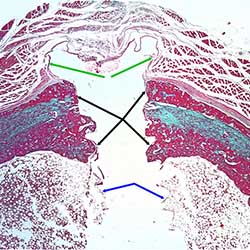Articles
Vol. 14 No. 3 (2022)
Adaptive structures proliferated in the rabbit shoulder after 8 weeks from the insertion of a titanium implant

Publisher's note
All claims expressed in this article are solely those of the authors and do not necessarily represent those of their affiliated organizations, or those of the publisher, the editors and the reviewers. Any product that may be evaluated in this article or claim that may be made by its manufacturer is not guaranteed or endorsed by the publisher.
All claims expressed in this article are solely those of the authors and do not necessarily represent those of their affiliated organizations, or those of the publisher, the editors and the reviewers. Any product that may be evaluated in this article or claim that may be made by its manufacturer is not guaranteed or endorsed by the publisher.
Received: 2 August 2021
Accepted: 23 February 2022
Accepted: 23 February 2022
1154
Views
315
Downloads












